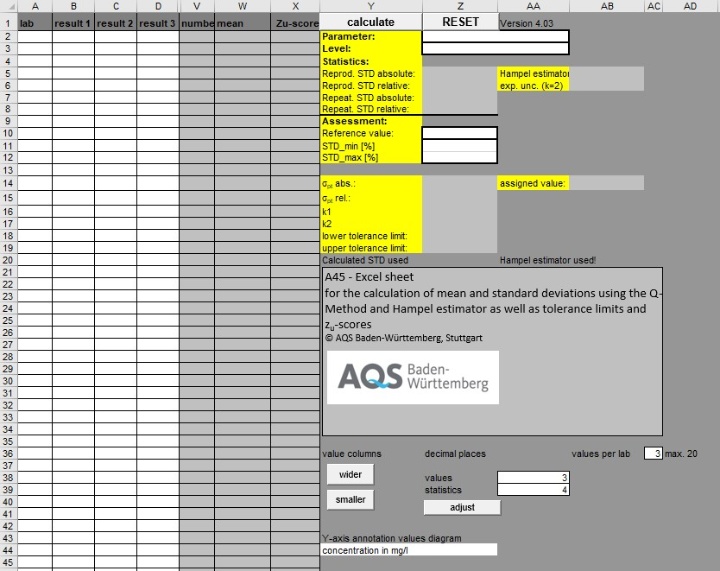In June 2024, the standard DIN 38402 - A45 "Proficiency tests for external quality control of laboratories", which was first published in September 2003, was revised. This standard requires to use the combined estimation procedure QHampel for estimating standard deviation and mean value as a procedure of robust statistics and zU-scores for the evaluation of the individual values. These procedures have also found their way into ISO/TS 20612:2007, and the QHampel procedure can also be found in DIN ISO 13528:2020.
You can purchase an evaluation programme based on an Excel macro from our cooperation partner QCA for €500 plus VAT.
If you are interested, please contact them directly (info@qca-koch.de).
Until now, we have provided you with EXCEL programmes for quality control charts and for estimating measurement uncertainties, as well as auxiliary programmes for evaluating proficiency tests.
This service has now been transferred to our cooperation partner QCA. You can find Excel tools at www.qca-koch.de
- for estimating measurement uncertainty in accordance with ISO 11352
- for estimating measurement uncertainty arising from sampling
- for maintaining quality control charts
- for creating kernel density diagrams
- for testing the homogeneity of proficiency testing items in accordance with ISO 13528
- for calculating a robust mean value and a robust standard deviation according to algorithm A (DIN ISO 5725-5 or DIN ISO 13528)
- to demonstrate the calculation principle of Algorithm A
- to estimate the standard deviation using the Qn method (ISO 13528)
- to calculate the standard uncertainty of the arithmetic mean, median and Algorithm A using bootstrapping (ISO 13528)
- for linearity testing according to A51 - DIN 38402-51:2017
- for testing the equivalence of two analysis methods using the Bland-Altman plot according to A71 - DIN 38402-71:2020
- for testing the equivalence of two analysis methods using the TOST method according to A71 - DIN 38402-71:2020


